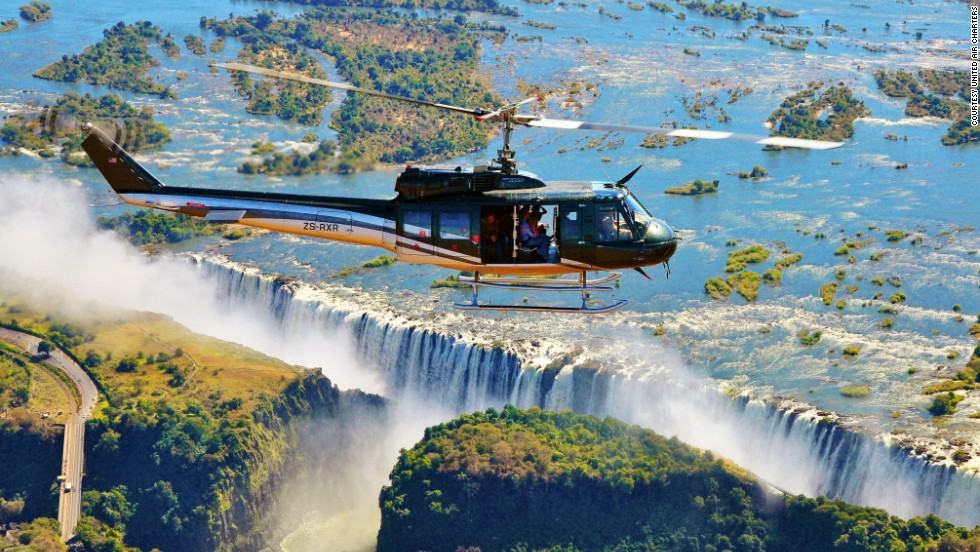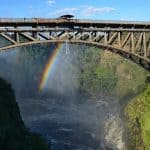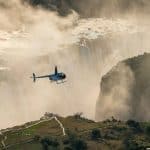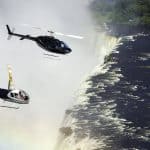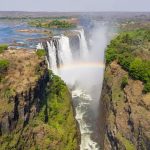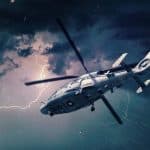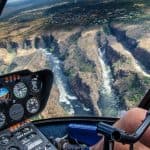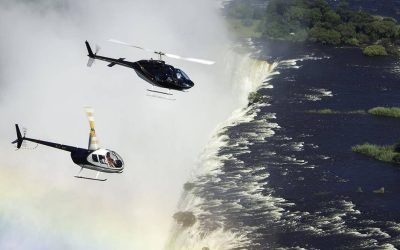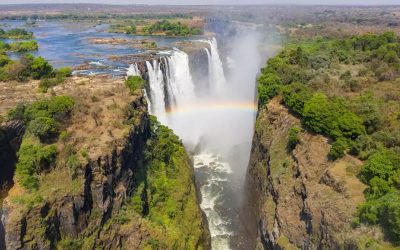Table of Contents
Huey Helicopter Rides
When you go for Huey Helicopter rides, you can enjoy a unique experience. The minimum donation for a flight is $153 per person. The price of a flight may vary depending on the cost of fuel, but your contribution will help keep the museum open and help restore the aircraft.
Flight experience
You can experience a unique flight experience in Victoria Falls, Zimbabwe. A Huey is an American twin-engine combat aircraft. The aircraft seats up to three people. The passengers are bystanders during the flight, so it is a must for them to be accompanied by an adult.
Huey helicopters are known to be one of the most famous military vehicles in the world. These aircraft are capable of flying at up to 90 mph and can perform manoeuvres planes cannot. The experience usually lasts between eight and ten minutes.
Minimum age for Huey Helicopter rides
If you want to take a helicopter ride in Victoria Falls, you can do so by visiting our activity product page.
You must be at least 14 years old to take the Huey helicopter ride. You must be accompanied by an adult for this experience. If you have children, they can ride with you as long as they have a guardian’s written permission.
Flight duration
You can purchase gift vouchers for Huey helicopter rides, and you can use these to enjoy the experience. The helicopters are capable of speeds of 90 mph, and they can do manoeuvres that a plane simply cannot. The flight duration of Huey helicopter rides is 15 minutes to 30 minutes.
Flight duration is also a factor when booking this experience. A Huey helicopter can accommodate five to nine passengers. Depending on the size of the group, you may be able to have a four-hour flight. Regardless of the flight duration, it is still worth the experience, as it’s an experience you will never forget.
Cost
If you’re interested in experiencing the thrill of an aerial adventure, Huey helicopter rides in Victoria Falls are an excellent option. They’re cheap and can be enjoyed by a group of up to three people. The average Huey helicopter ride lasts about 15 minutes and costs $153 per seat. Most Huey helicopter rides in Victoria Falls depart from air shows or other similar events. You can usually expect to receive a safety briefing in advance, and the instructor or pilot will demonstrate how to use a seat belt and how to operate a camera.
About the Huey Helicopter
The Huey helicopter is a military utility helicopter. It was developed by the American aerospace company Bell Helicopter. It was the first turbine-powered helicopter to enter service with the United States military. The Bell UH-1 Iroquois was designed to perform many tasks, including firefighting and cargo delivery.
Bell UH-1 Iroquois
The Bell UH-1 Iroquois helicopter is a utility and military helicopter. It is one of the first turbine-powered helicopters in the United States. It was developed and produced by Bell Helicopter. In 1961, the Bell UH-1 Iroquois took its maiden flight. As a result, it quickly became one of the most widely used military helicopters.
The Bell UH-1 Iroquois began service in the early 1960s as a military helicopter. It was also used for humanitarian aid and training pilots. In the Vietnam War, the Huey was widely used by the U.S. Army, Navy, and Coast Guard. The Huey earned a legendary reputation and earned a place in history.
The Huey has served in many wars since its inception. The Vietnam War saw the first combat deployments of an Iroquois. The helicopter carried a variety of weapons and was modified to meet the needs of each mission. The Iroquois was also deployed to the Royal Australian Air Force in Vietnam.
The Huey/Bell UH-1 helicopter was used in Vietnam. A soldier on the ground guides the helicopter. It is commonly equipped with two forward-firing machine guns and launchers for 2.75-inch rockets. The Huey is also capable of performing refueling missions.
The Bell UH-1 is a utility helicopter, powered by one turbine. It is used in a variety of applications, including air assault, command and control, and evacuation of injured soldiers. This helicopter was the workhorse of the Vietnam War. Its performance in such combat situations made it the most widely used helicopter of the war.
The Bell UH-1 Iroquois is best known as a Huey. It was first developed in the mid-1950s and produced over 16,000 units between 1955 and 1976. In Vietnam, over 7,000 Huey helicopters were used in combat and for medical evacuation. It also served in research operations and search-and-duty missions. After its debut, it was modified and adapted for military use.
The Huey’s combat role changed dramatically after the arrival of machine guns. Its door gunners could spot enemy troops and rain lead down on them from above, tipping the balance of power. According to retired Lt. Col. A. Michael Leahy, who flew 73 missions as a door gunner, the Huey’s ability to fire lead from the air helped tip the war in the United States’ favor.
Bell UH-1 H
The Bell UH-1 is a light-lift utility helicopter used for a variety of missions, including distinguished visitor airlift, disaster response, search and rescue, and medical evacuation. It is also used for aerial testing and for aircrew training. In addition, it can support various types of aerial activities, including airborne cable inspections.
The Bell UH-1H helicopter is equipped with sophisticated navigation, guidance, and control systems. The aircraft also features sophisticated display and data acquisition capabilities. In its terminal area, it contains two Sperry 1819B general purpose digital computers that perform specified system flight computations. The computers are available to NASA for experimental flight programs. The helicopter is equipped with a keyboard-selectable gain and software-generated alphanumeric displays.
The Bell UH-1H is nearly identical to its predecessor, the Bell UH-1D, but features a more powerful engine. This upgrade enables it to carry up to 13 troops. It also features a two-bladed semi-rigid main rotor and a rigid delta hinge-bonded all-metal tail rotor. Its single Lycoming T53-L-13B turboshaft engine generates 1400 horsepower. The Bell UH-1H has served with the U.S. military for over three decades and has even served with several foreign countries.
The Bell UH-1 has a crew of three. It is capable of nighttime and instrument flights. A single-engine Bell UH-1N can seat up to 13 passengers, though the actual number may be higher. Actual passenger load will depend on fuel load, atmospheric conditions, and flight configuration. In addition, the helicopter has a medical evacuation configuration that can hold up to six litters. Its cabin is equipped with a large cargo space and two sliding doors that allow passengers to board and exit the aircraft easily.
The UH-1H is an improved version of the UH-1D. This version was designed as a troop carrier for the US Army and was fitted with a Lycoming T53-L-13 engine that produces 1400 horsepower. Bell produced 3 573 UH-1Hs for the US Army and 1 317 for export. A Japanese version of the UH-1H was also developed. This modified version is equipped with an infrared countermeasure system, a more comfortable cockpit, and improved safety equipment.
The Bell UH-1 “Huey” is a multipurpose utility helicopter that was developed by Bell Corporation in the mid-1950s. It was first used in the Vietnam War and was a popular choice for MEDEVAC and troop transport. In the years after its introduction, more than 7,000 Hueys served in the US Army.
Bell UH-1 Cobra
The Bell AH-1 Cobra is a single-engine attack helicopter produced by the American rotorcraft manufacturer Bell Helicopter in Fort Worth, Texas. It is part of the Huey family and was a mainstay of attack aviation during the Vietnam War. It has been produced in a variety of versions since its introduction in the early 1960s.
The Cobra has a wingspan of sixteen meters, an overall length of 13.5 meters, and a fuselage length of 13.5 meters. The Cobra is a relatively lightweight helicopter, and its stub wings provide extra storage for supplies. The Cobra has a maximum speed of 149 knots and can fly up to 11,400 feet. The Cobra can also climb at a rate of 1,230 feet per minute. Its maximum takeoff weight is 4,309 kg, and it has an empty weight of 2,635 kg.
Bell UH-1 Cobras were very stable and easy to operate. The “popping sound” that accompanied the helicopter’s engines was a signature characteristic. The Cobra is still in use by the U.S. Marine Corps today, and this Museum’s AH-1E Cobra is an improved version of the AH-1S Cobra, which served with the 7th Light Infantry Division in California. This helicopter was donated to the Museum by the U.S. Army in 1993 and is a unique piece of aviation history.
The Bell UH-1 Cobra was a versatile helicopter that served in a number of military roles. It was most often used by the US Marine Corps to provide close-in fire support during amphibious assaults. It was powered by Pratt & Whitney T400 engines and produced a maximum of 1 530 horsepower. It was also equipped with TOW missiles.
The USMC purchased three UH-1s in February 2008, followed by a contract for 15 upgraded helicopters in September 2008. By February 2010, Bell had delivered 20 H-1s to the USMC, which lasted until September 2009. The US Navy purchased 16 Lot 6 H-1 helicopters in 2009. In 2009, the Philippines ordered an additional four UH-1Ys.
Bell UH-1 H Model
The Bell UH-1 is one of the most iconic helicopters in the United States. It is best known for its use during the Vietnam War, but the UH-1 is still in air force and military service today. The Bell UH-1 originally carried out a variety of missions including general support, air assault, cargo transport, search and rescue, and instrument training. In the early 1960s, the UH-1 was upgraded to a larger, upgraded version based on the Model 205, which flew operationally for three years.
Thousands of Bell UH-1 Iroquois helicopters were manufactured and are still in service throughout the world. Some have been decommissioned and are now used as static displays or gate guardians at different military bases. The helicopters were also used by the Vietnam Veterans of America and the Veterans of Foreign Wars.
The Bell UH-1 was originally designed for the Canadian military. However, its success led to an increased number of orders from the U.S. military, which far exceeded the initial 50 Canadian orders. The first UH-1H entered service in the United States in 1970, followed by the UH-1N helicopter. The two models shared a common fuselage and engine, which provided a total of 1,800 horsepower.
After testing the Huey’s flight capabilities, Bell and the Army decided to produce 200 medevac versions and 100 instrument trainers for the United States Army. The UH-1 Huey remained in service until February 1994, when the U.S. Army Aviation Museum retired it. The National Air and Space Museum then acquired it and restored it in its Paul E. Garber Restoration Facility. The Huey is now on display at the Steven F. Udvar-Hazy Center.
During the Vietnam War, the UH-1 was used in combat by US forces. It served with 4 different units and compiled a distinguished combat record. Its mission was to provide a smokescreen during air assault operations. It also performed observation missions and test TOW missiles. This helicopter was used in numerous tests during the war, and two of its UH-1B helicopters were outfitted with the XM26 Armament Subsystem.
In 1965, Bell upgraded the Huey and introduced the UH-1D. This version had an expanded main cabin and an improved engine. However, it still lacked the power to fly at high altitudes in the humid climate of Vietnam. This helicopter also featured a cabin for six stretchers and a medical attendant.

